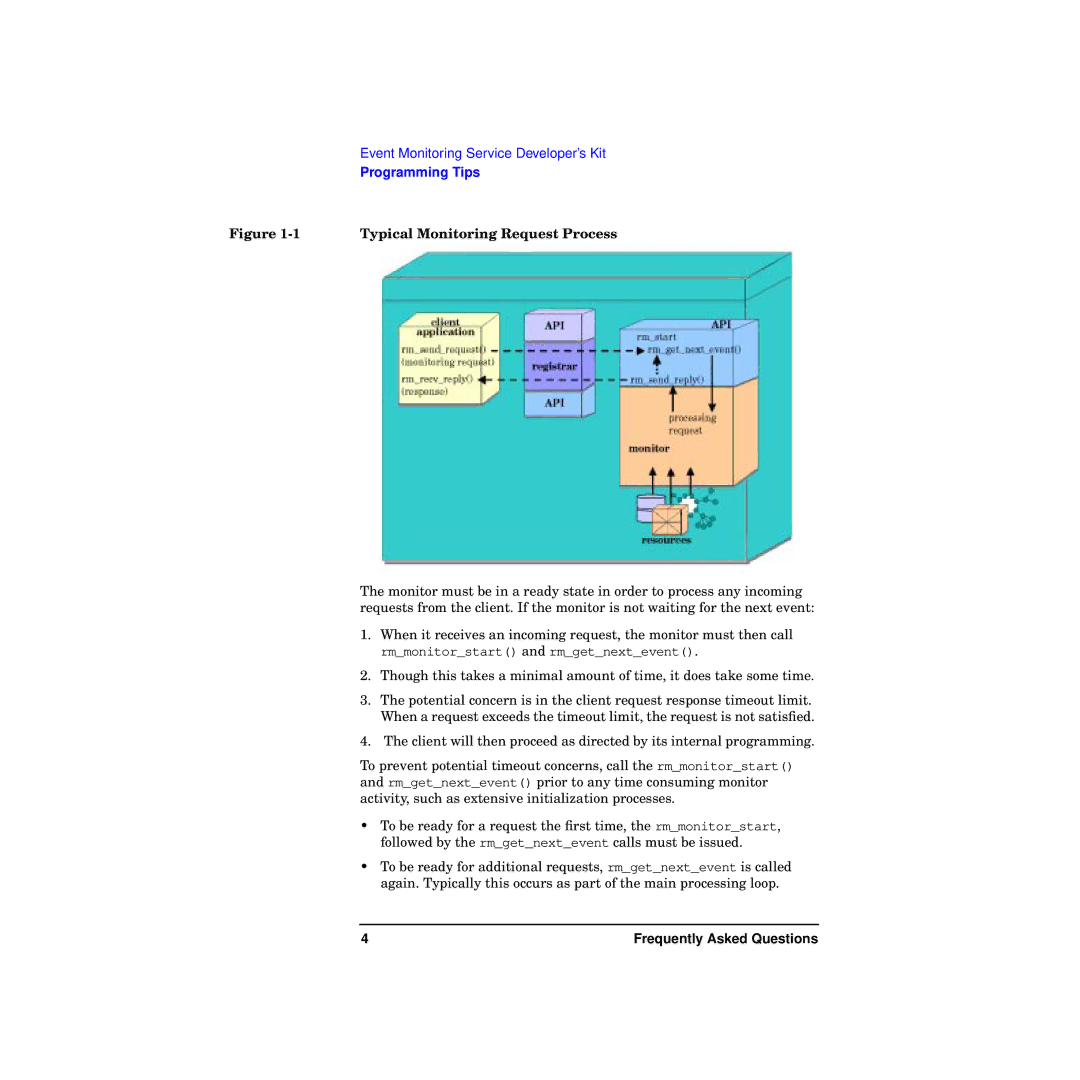
Event Monitoring Service Developer’s Kit
Programming Tips
Figure | Typical Monitoring Request Process |
The monitor must be in a ready state in order to process any incoming requests from the client. If the monitor is not waiting for the next event:
1.When it receives an incoming request, the monitor must then call rm_monitor_start() and rm_get_next_event().
2.Though this takes a minimal amount of time, it does take some time.
3.The potential concern is in the client request response timeout limit. When a request exceeds the timeout limit, the request is not satisfied.
4.The client will then proceed as directed by its internal programming.
To prevent potential timeout concerns, call the rm_monitor_start() and rm_get_next_event() prior to any time consuming monitor activity, such as extensive initialization processes.
•To be ready for a request the first time, the rm_monitor_start, followed by the rm_get_next_event calls must be issued.
•To be ready for additional requests, rm_get_next_event is called again. Typically this occurs as part of the main processing loop.
4 | Frequently Asked Questions |
